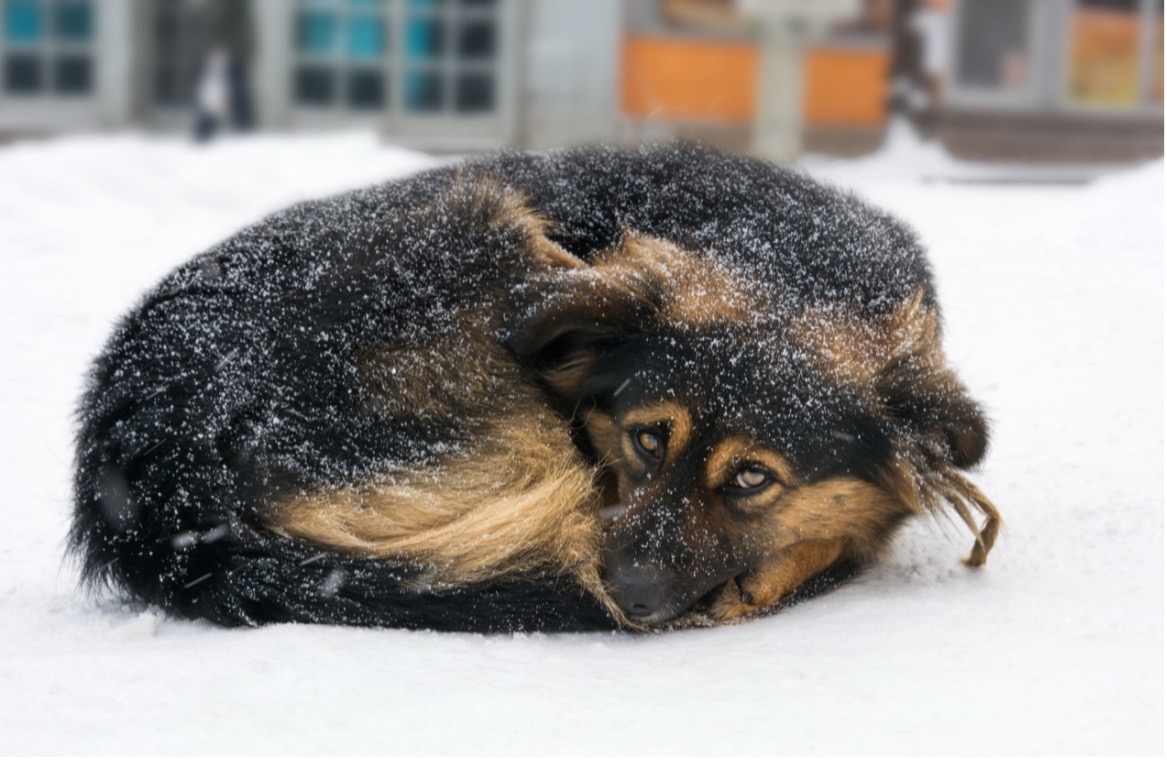We don’t need to tell you that it is cold outside in Spring Creek, Nevada and that more storms are on the way. We know how to dress and stay warm during harsh weather. But some people believe dogs and cats are more resistant to the cold than we are because of their fur, but this is untrue.
45F or below is too cold for pets and presents a risk of hypothermia and frostbite. Temperatures below freezing present an even higher risk. And extremely cold weather can be hazardous for pets.
Fortunately, keeping a pet warm and safe in cold temperatures isn’t as hard as it seems when you follow our ten tips below.
1. Keep Your Pets Inside.
Proper clothing for cold weather can make all the difference in pet safety in cold weather. If your pet has a short coat or is small, consider purchasing a jacket, sweater, or other protective clothing for outside. Additionally, check your pet’s paws and ears frequently – if they feel cold, it’s best to cover them up with booties or a hat.
2. Dress Your Pet Appropriately
Proper clothing for cold weather can make all the difference when it comes to pet safety in cold weather. If your pet has a short coat or is small, consider purchasing a jacket, sweater, or other protective clothing for them so they can stay warm in chilly temperatures when they need to go outside. Additionally, be sure to check their paws and ears frequently – if they paws feel cold, it’s best to cover them up with some booties or a hat.
3. Know Your Pet’s Cold Weather Limits
A pet’s cold tolerance can vary depending on its coat, body fat stores, activity level, and health. So, know your pet’s tolerance for cold weather.
If your pet has health issues such as arthritis, diabetes, heart disease, kidney disease, or Cushing’s disease, understand they are more susceptible to problems from cold temperatures. The same goes for very young pets. If you need clarification on your pet’s cold tolerance, please let us know so we can help you. A safe rule in the winter here in Spring Creek, Nevada, is to shorten your dog’s walks in freezing weather to protect you and your pet from cold weather health risks.
4. Know the Signs Your Pet is Too Cold
If your pet is whining, shivering, seems anxious, slows down or stops moving, seems weak, or starts looking for warm places to burrow, get them back inside quickly because they are showing signs of hypothermia. Frostbite is harder to detect and may only be fully recognized a few days after the damage is done. If you suspect your pet has hypothermia or frostbite, consult us immediately.
5. Check Your Pet’s Paws
Check your pet’s paws frequently for signs of cold-weather injury or damage, such as cracked or bleeding paw pads. Sudden lameness may be due to an injury or may be due to ice accumulation between your pet’s toes. You can reduce the chance of ice ball accumulation by clipping the hair between your dog’s toes.
6. Keep a Collar on Your Pet and their Microchip Data Up to Date
Pets can become lost when snow and ice mask the familiar scents that usually guide them home. For this reason, you must keep a well-fitting collar on your pet with up-to-date identification and contact information. A microchip is a more permanent means of identification. Keep your pet’s microchip information up to date in your microchip registry.
7. Beware of Antifreeze & De-Icing Products
Antifreeze and road salt have hazardous components that could be fatal if ingested by your pet. Please keep your pet away from these substances. When you bring them inside, carefully clean their feet after each walk to remove any lingering chemicals. And be aware of any signs of illness, such as vomiting, excessive drinking, or urination.
8. Keep Pets Off Frozen Ponds
Frozen lakes, ponds, and other bodies of water pose many dangerous hazards for you and your dog. Falling through ice can cause hypothermia, organ damage, or drowning. Additionally, ice can cut skin, cause ice burn or frostbite, and cause severe injuries due to slipping and falling. The best way to avoid these frosty hazards is to keep your pet on a leash and off the ice.
9. Take Your Cell Phone with You on Walks
Even on a short walk with your pet, take your cell phone with you in case of an emergency. If either you or your pet gets injured, you can contact someone for help. But it is also advised not to use your cell phone for talking or texting while walking as you can get distracted and trip or fall.
10. Don’t Leave Your Pet in the Car Alone
Nevada law prohibits leaving a cat or dog unattended in a parked or standing motor vehicle during extreme heat or cold or in any other manner that endangers the health or safety of the cat or dog (NRS 574. 195).
In winter, cars without heaters running become rolling refrigerators, conducting cold from the outside. Cars have little to no insulation against external conditions. So, while your vehicle may shelter your pet from the wind and elements, it does not protect them from cold or freezing temperatures. And it’s dangerous to assume that your dog’s fur will be enough to protect it from extreme cold.
Final Words
Following these ten tips can ensure that you and your beloved animal companion stay safe and healthy during even the chilliest winter days
Your Friendly Team at
Aspen Veterinary Clinic

